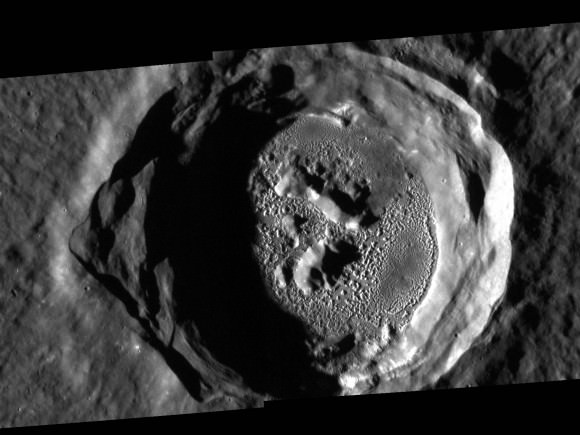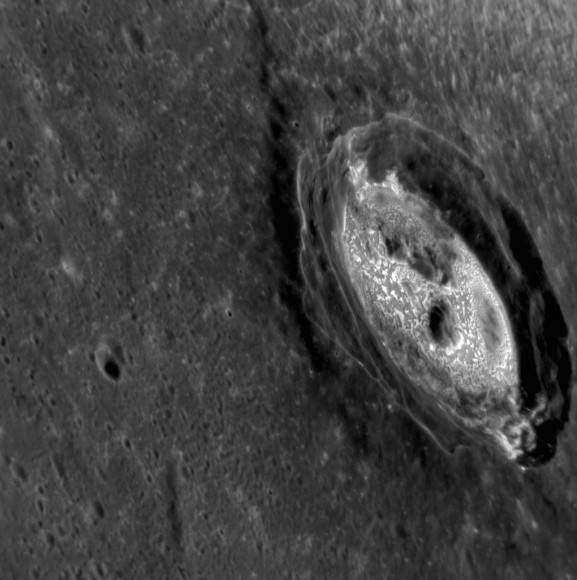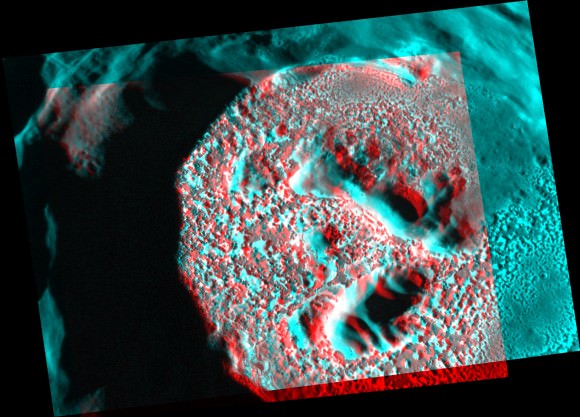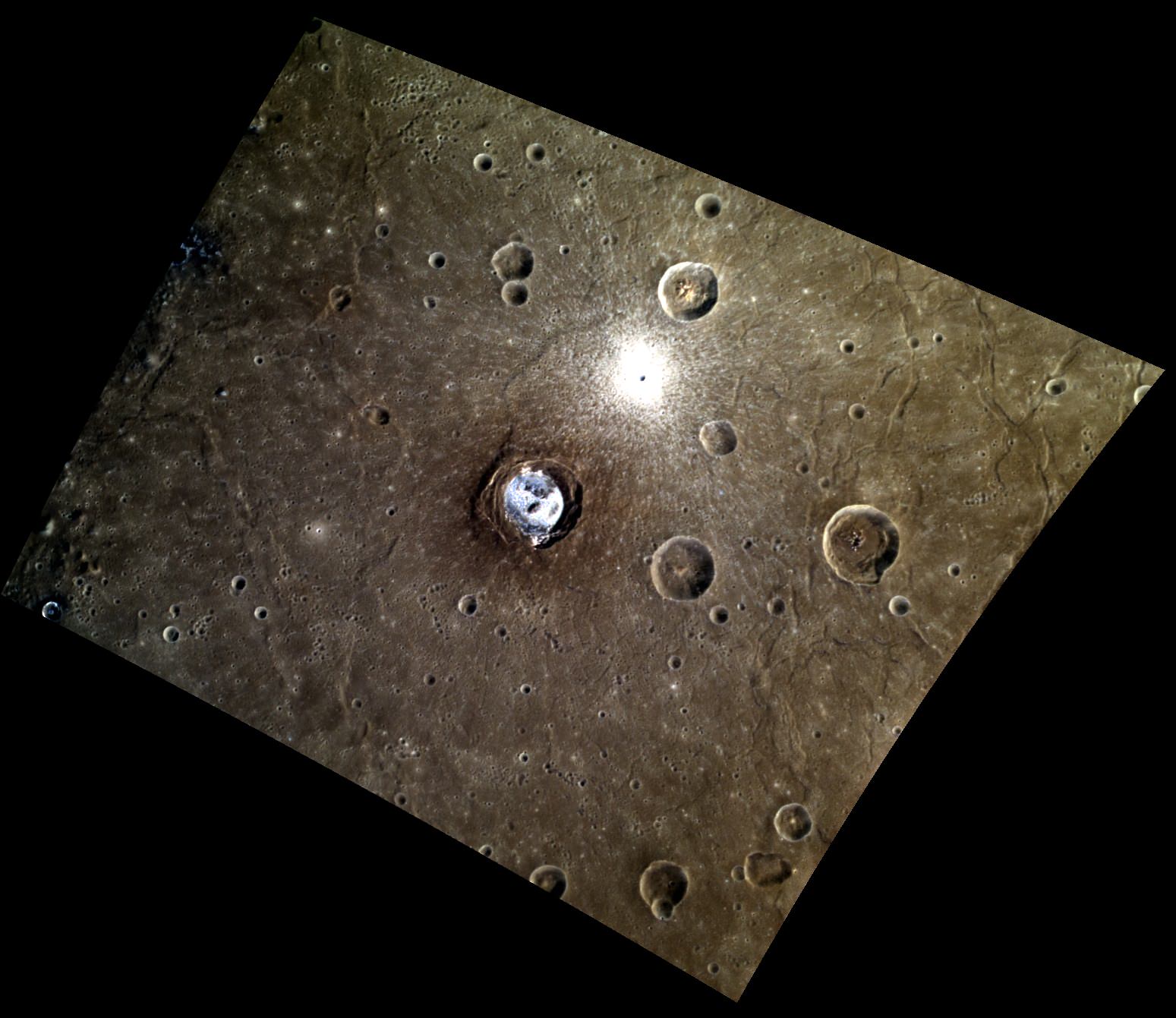At first glance, you’d think that white stuff on the floor of Kertesz crater is ice, especially since that substance has been confirmed on its home planet — Mercury. This new shot of the 19-mile (31-kilometer) crater in the Caloris basin shows off irregular depressions, or hollows, that jump out in this color-enhanced picture taken by NASA’s MESSENGER spacecraft. More close-up pictures from previous passes are below the jump.
“The bright material on the floor of Kertész crater is not the water ice recently confirmed to be in craters near Mercury’s poles, but it might well be behaving as ice would on another planet,” NASA wrote in 2012.
“Mercury’s daytime temperatures are so hot at most latitudes that rocks that would be stable at other places in the Solar System may essentially evaporate on Mercury. That is one theory for the formation of these bright, irregular features known as hollows seen here and in many other craters on Mercury.”
There’s still much to learn, so scientists are probably grateful that MESSENGER is still working beyond its design lifetime. It was originally supposed to conclude in 2011, but its mission was extended further to see the effects of the solar maximum on the solar system’s closest planet to the sun.





“Mercury’s daytime temperatures are so hot at most latitudes that rocks that would be stable at other places in the Solar System may essentially evaporate on Mercury.” – NASA
Rock landscapes evaporating like ice formations under heat? Similar to desert terrains subject to extremes of heat and cold, formations eaten away by erosive forces ( lighter material compositions more readily dissolved, or broken-down than others )? Solar Wind blasts and radiation showers weathering Mercury’s enigmatic surface.
The planet’s original state, and veiled history, may hold clues to this mysterious erosive effect. Today’s naked exterior, may not have been yesterday’s clothed surface.
I’m not clear on what these “hollows” are. Are they like pock-marks? or like sunken spots?